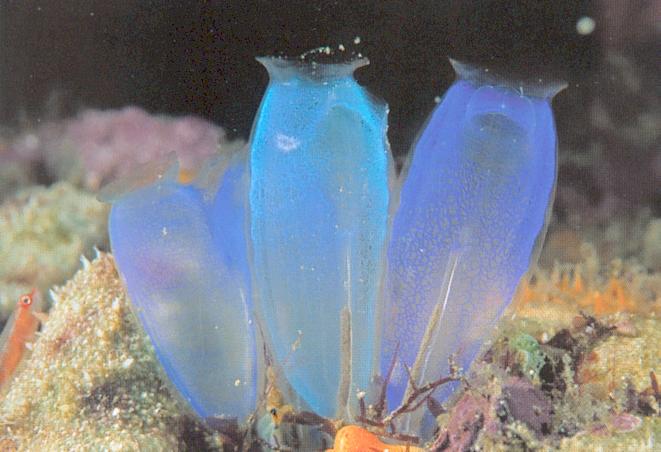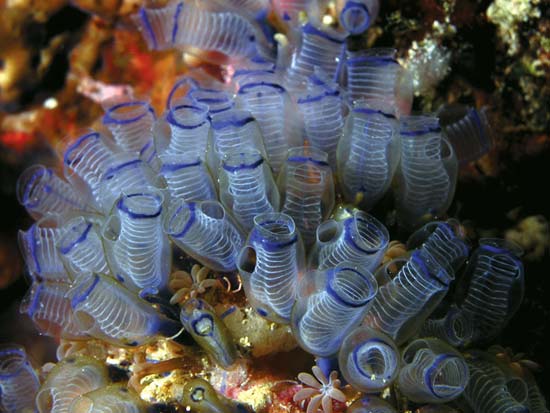Issue #340
Wednesday August 11, 2021
The Incredible Tale of the Incredible Sea Squirt
(and what it means for us)
by Maureen Marcus
Like all of you, I’m always looking/listening/scouting for information and stories to inspire my clients, and, truth be told, to inspire myself – to keep myself alive and alert to my clients, and able to draw on what seems like a sub-threshold reservoir of knowledge, tricks and techniques we all have after teaching for a number of years. I say “sub-threshold” because often I pause and think about how impossible it is to actually remember everything I’ve learned from every training, every course, every client situation, every teacher I’ve ever heard utter a word of wisdom. So, I have to trust the neural soup to serve up the appropriate nugget of nourishment for the situation at hand. And I’m frequently surprised at what “I” come up with! Even though it’s supposed to be me, “my” brain, “my” experience I’m drawing from, if you were there and asked me where I learned that technique or movement, or how I knew to respond to that student’s problem in just that way, I’d have to say, “Beats me!” (which means “I have absolutely no idea” for those whose first language isn’t English).
All of which is pretty amazing in itself, don’t you think? We learn, and we enjoy learning. But then there’s the learning our brains do without our conscious recognition: all the neural pathways running this way and that (very technical jargon), and somehow, we can even surprise ourselves with what we don’t know that we know.
I know you’re dying to hear about the Sea Squirt, but patience, Dear Reader. We’re getting there. First we have to talk about our ability as human animals, to learn. And, reference the above paragraph, learn we do! Even without our conscious “knowledge”.
I’ve heard scientists say that we, the human animals, learn “better” than any other creature on the planet. Truth to tell, I take issue with that statement. Every creature learns, every creature’s brain loves to learn, even if they wouldn’t be able to tell us how excited they are about the new cache of grubs they found today, or about the hot new boy armadillo they met in the forest.
Remember your Darwin: the intelligence of all creatures differs in kind, not in degree.
But here’s where we might differ from our fellow travelers: I can almost guarantee that the armadillo, even a brilliant armadillo, can’t surprise herself with an unexpected bit of knowledge. I could be wrong, but it’s hard to imagine. At least for me.
I’d go so far as to posit that a love of learning and a love of that surprise element is what keeps us all alive because it initiates seeking –new food sources, new sources of comfort and nutrition, new sources of excitement and pleasure.
And seeking of course requires movement. Ah! Now we’re getting closer to the Sea Squirt! But allow me first to continue with this disquisition on movement.
All creatures move, to some degree, according to their kind. And as human creatures, our movement is a quantum leap ahead of others in the animal kingdom. I quote yet another scientist who calls us the “Swiss Army knives of the animal world” – we alone move in all planes, and with enormous ranges and possibilities.
And here’s where it all starts to get interesting. The current thinking in the world of cognitive research is that we have these big brains not because of our fine thoughts. Oh no. Not by a long shot. (I don’t know about you guys, but I don’t have nearly enough fine thoughts to account for this 12 pound (roughly 5.5 kilos) lump atop my shoulders.) Our big brains are there to calibrate, control and coordinate our intricate movements.
Finally! This lands us squarely on the front doorstep of the Sea Squirt.
And isn’t he beautiful! For those of you unfamiliar with this creature, don’t feel bad. He’s easy to overlook because he’s a simple (read, primitive) marine animal. When he’s born (however a sea squirt gets born), he dollops around in the shallows of a body of water until he finds something — a rock or a barnacle — something that rests in the path of a food supply where he can attach himself.
And that’s where Mr./Ms. Squirt remains for the rest of his/her very (to our way of thinking) uneventful life.
But that’s not all. Here’s the most thrilling part.
Drum Roll, please.
When it attaches, the first thing it does is to metabolize its brain.
It eats its brain because without movement, it doesn’t need a brain. It doesn’t need a brain because it doesn’t need to learn. It doesn’t need to learn because it doesn’t need to seek. And if it doesn’t need to seek, it doesn’t need to move.
Et voila! This then is the Large Lesson provided us by the humble sea squirt:
Movement builds brains.
Just guessing, but I think Joseph Pilates knew this. Pilates, and in fact all the systems and modalities we use as teachers of movement, synthesizes our creaturely abilities to learn and to move and capitalize on them. That’s why our work is so valuable, so enriching, and so effective. So much fun, so exhilarating, so full of endless possibilities.
And so necessary. Especially in this day and time when we’ve arranged our world so we don’t have to move. Yes folks, we’ve arranged our world to mimic the sea squirt.
I know you’re all familiar with the abundance of studies showing that the quickest way to physical and brain health ( there’s a division??) is movement. Specifically, movement that challenges, that requires focus and attention, that surprises — aha! — there’s that word again — body and brain with new vectors, new planes, shifting loads, and ever-increasing challenges.
Likewise, the research showing that what we’ve heretofore assumed were the ailments, the infirmity and even the dementia of age are actually illnesses that result from a sedentary lifestyle.
It’s only good to be a bored couch potato if you’re a sea squirt.
I tell my students: throw out the Tired Man Chair (a couple of them actually did!). What floats our boat as teachers, what rings our bells, warms our cockles and strengthens our vagus nerves (read, hearts) is to see our students standing tall with wide-open faces and hearts and a sparkle in their eyes as they float out the door.
When you get tired and discouraged, remind yourself of this: What other profession gets to see such beautiful and instant results of their work?
None that I know of.
Maureen Marcus – In the early 2000’s when I was a massage therapist working in PT clinics in Atlanta, a dance colleague opened the first Pilates studio in Atlanta and invited me to train and work with her. Thus began my career as a movement professional. Hard to believe, but at that time, there were no corporate training systems (and yes we had to walk to class in the snow) so my initial instruction was from Romana via Leslie Clayton, Long Beach Dance Conditioning via Katy Roelle of Body Reformation, hence a melding of classical and contemporary systems, with a focus on critical reasoning (thank you, Katy). After my grounding in Pilates, I branched out into Gyrotonic, with stops along the way to do coursework with Polestar, Anatomy Trains,
Redcord, ScolioPilates, OsteoPilates, Feldenkreis, every FAMI workshop I could possibly sign up for, and these days, immersion in the Fascial Congress reports and ferreting out as much of Pain Neuroscience education as I possibly can via the fabulous work by David Butler (NOI) and Lorimer Moseley’s Pain Revolution. I have a small studio in Rome, GA (extreme NW corner) where I am honored to be able to practice a melding of the above named systems with the enthusiastic (usually) participation of my clients. Ya’ll come go with us!




